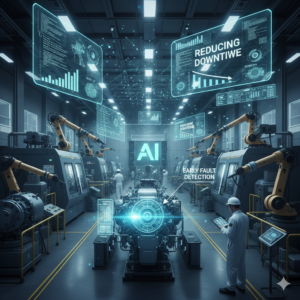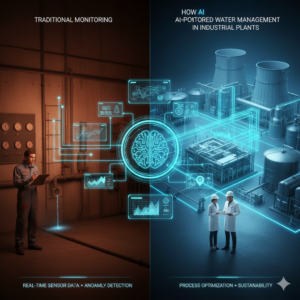Artificial Intelligence in Emergency Rooms: Eliminating Wait Times and Saving Lives
Artificial Intelligence in Emergency Rooms: Eliminating Wait Times and Saving Lives
Every second is important in emergency rooms (ERs), which are characterized by a high level of pressure and a fast-paced atmosphere. The experts in the medical field are faced with making judgments that may save lives in a short amount of time, sometimes with little knowledge and under intense pressure. Artificial intelligence (AI) is a transformational technology that is fast becoming a formidable ally in emergency care. It has the potential to revolutionize the field.
The use of artificial intelligence is assisting emergency departments in becoming more efficient, accurate, and ultimately, life-saving. This includes quicker diagnosis, improved triage, and better resource allocation.
Why AI Is Necessary in Emergency Rooms
When there is an unexpected influx of patients, emergency rooms can become overcrowded, under-resourced, and otherwise overloaded. Considering the chaotic character of the situation, the possibility of:
- a delay in the diagnosis
- Failure to communicate
- Errors caused by humans
- a higher death rate among patients
It is not the intention of AI technologies to replace physicians but rather to assist them. They are able to evaluate enormous volumes of data in a matter of seconds, identify patterns that are not obvious to the naked eye, and provide insights that assist medical professionals in making choices that are both more timely and correct.
Applications of Artificial Intelligence in Emergency Rooms: What’s Changing?
1. Diagnosis that is both quicker and more accurate
Using millions of medical data, scans, and clinical reports, diagnostic systems that are driven by artificial intelligence are educated. When employed in emergency departments, these instruments are used to:
- In a matter of seconds, do analysis on X-rays and CT images, which may assist in the detection of fractures, hemorrhages, or lung ailments.
- Brain imaging allows for the identification of stroke symptoms considerably more quickly than standard radiology systems.
- Based on the patient’s vital signs and laboratory results, identify potentially life-threatening illnesses like as sepsis, heart attacks, or pulmonary embolisms.
Before an electrocardiogram (ECG) or laboratory test is even finished, for instance, an artificial intelligence system can notify medical professionals that a patient who presents with modest chest discomfort is really exhibiting indicators of a heart attack.
2. Intelligent Triage: Giving Priority to the Appropriate Patients
The process that hospitals utilize to determine which patients would get treatment first is called triage. Getting this wrong in an emergency room that is already at capacity may have devastating repercussions.
By assessing patient symptoms, history, vital signs, and risk factors, artificial intelligence (AI) assists in the automation of triage decisions. Because of this, emergency rooms are able to:
- Ensure that key instances are prioritized with more precision.
- In order to reduce human bias in evaluations
- Take care not to underestimate symptoms that seem to be “mild” but might really be indicators of more severe illnesses.
- The end result is a more intelligent prioritizing system and a more expedient intervention for those who need it the most.
3. Management of workflow and optimization of available resources
AI is not just being used for patient care; it is also assisting emergency rooms in running more efficiently behind the scenes. The following are some of the capabilities of AI tools:
- It is possible to forecast the number of patients who will be coming in depending on the time of day, the season, or local activities.
- Assign medical personnel and equipment in accordance with the anticipated need.
- Cut down on wait times and simplify the process of assigning beds
- Artificial intelligence (AI)-supported operations in hospitals often result in considerable reductions in patient wait times and emergency room (ER) congestion.
4. CDSS, which stands for clinical decision support systems
For the purpose of directing therapy in high-pressure circumstances, medical professionals depend on clinical decision support technologies. CDSS platforms that have been upgraded using AI:
- Make recommendations for therapies that are supported by evidence based on the symptoms that are currently present.
- Be aware of any potential medication interactions.
- Provide up-to-the-minute information on the most effective procedures and novel research.
- Errors are reduced as a result, particularly when addressing illnesses that are challenging or uncommon.
Detection of Stroke as an Example from Real Life
A few of institutions have included AI into their stroke detection protocols in recent years. When it comes to stroke treatment, time is of the utmost importance; “time is brain.” It is possible that millions of brain cells will be lost for every minute when therapy is not received.
When artificial intelligence systems are linked to imaging machines such as CT scanners, they are able to rapidly assess the data and alert neurologists remotely. This reduces delays and guarantees that patients who have had a stroke get life-saving therapies such as medications that break up clots, such as tPA, within the golden hour.
- Are There Any Causes for Concern?
AI in the emergency room has a lot of potential, but it also has several potential drawbacks: - In order to avoid inappropriate use of sensitive patient information, data privacy must be maintained.
- Machine learning that has been trained on biased datasets may incorrectly diagnose symptoms in communities that are underrepresented.
- The usage of artificial intelligence (AI) suggestions should not be mindlessly followed by medical practitioners; they should still utilize their own judgment.
- In the event that an artificial intelligence (AI) gives an incorrect diagnosis, who is accountable for the consequences? The physician, the hospital, or the software provider?
- It is imperative that regulatory organizations, ethicists, and healthcare practitioners collaborate in order to effectively handle these difficulties while also ensuring the safety of patients.
The Future: Artificial Intelligence as an Important Member of the Emergency Response Team
In the next years, we are likely to see the following:
- Artificial intelligence systems that access real-time data from patients’ smartwatches or fitness trackers are referred to as wearable data integration.
- Natural language processing (NLP) refers to the process of automatically updating electronic health records based on interactions between a physician and a patient.
- AI agents that are autonomous are able to make recommendations for therapies and initiate processes without the need for human intervention (while still being supervised).
Artificial intelligence will not be able to take the role of physicians working in emergency rooms; rather, it will become a reliable aide that is able to handle normal and repetitive duties. This will allow medical professionals to concentrate on what is most important: saving lives. The emergency department is the first place where life-saving medication is administered. When dealing with situations that have such high stakes, even very little adjustments may have a significant impact. Artificial intelligence is fast becoming a game-changer in the field of emergency care. It is doing this by improving diagnoses, optimizing processes, and providing assistance for decision-making.
Despite the fact that technology will never be able to take the place of human physicians’ sensitivity and intuition, artificial intelligence will surely make emergency rooms more efficient, safer, and more intelligent. This is a future that is worth working toward.




